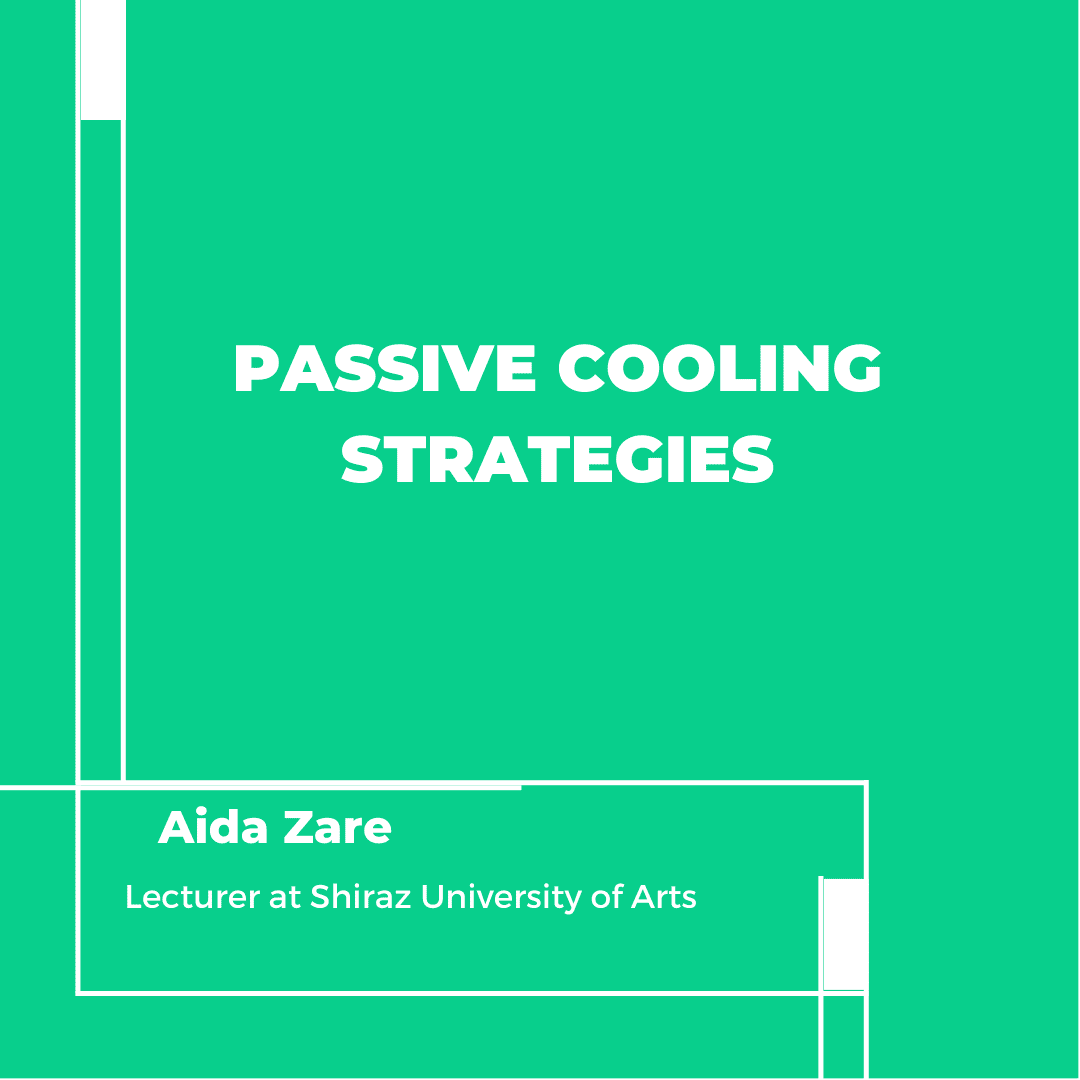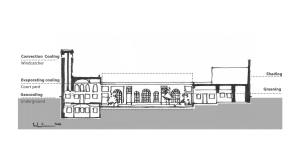Passive cooling strategies

News Detail

Source:
Aida Zare

Ardakanian House, Yazd, Iran. Passive cooling strategies in Traditional houses.
Passive cooling strategies
Global warming, and its related crisis made architectural communities, tended to sustainable design solutions during recent years. Providing thermal comfort conditions, is one of the major energy consumption sessions in buildings, and for hot climatic zones, cooling the spaces is a serious matter. Passive cooling strategies were an unrepeatable part of buildings in vernacular and traditional architecture especially in hot climate regions before industrial revolutions, they provide thermal comfort using natural fellows and environmental elements. Hence learning and perceiving the function and type of passive cooling strategies would be significant to design more responsive buildings less dependent on fossil fuels. The main strategies for cooling the buildings can be categorized in sixth items; Shading, Convection cooling, Evaporating cooling, Radiative cooling, Geocooling, and greening that will be explained briefly in this article.
Shading
The simplest and primitive way of cooling a building is preventing the extra heat from entering the indoor spaces by using different ways of shading. An appropriate shading design can provide a nice daylight and privacy, while avoiding heating or glare. There are different kinds of shading, according to their place of installation, outdoor shades are more efficient rather than indoor shades. The whole volume of a building can be designed in a way that makes a self-shade, according to its form. Windows shades can be horizontal, vertical, recessed windows, seasonal or fixed. The type of glasses and frames of the windows also can be very effective in a better function of a shade system.
Convection
Cooling by convection is based on this simple rule that warm air rises and cool air falls. Natural ventilation, chimney effect, stack effect, and cross ventilation are effective passive strategies that work by replacing the warm air with fresh air to cool the building. The features of these strategies appear on appropriate openings, clerestory windows, roof ventilators, wind scoops, wind towers, and different kinds of windcatchers. Windcatchers are among the most effective systems that can catch outdoor cool breeze or vent indoor warm air.
Evaporating cooling systems
Water evaporation absorbs a large amount of heat and this decreases the air temperature while improving relative humidity which is a great opportunity in hot and dry climate to make an indoor thermal comfort. This strategy is one of the oldest passive cooling techniques that were used in Persian and Egyptian traditional architecture. They have been used windcatchers to direct the air flows through the subterranean water in a Qanat or indoor pools and conduct the cool humid air into the building. Courtyard houses also benefit this strategy using plants and pools. Roof ponds and water curtains are other passive techniques that cool the spaces by evaporation.

Aghazadeh house, Abarkuh, Iran. Most of passive cooling methods like: evaporative and convection cooling, shading and greening were used simultaneously in traditional courtyard houses.
Radiative cooling
This strategy is based on the heat transfer between a hotter body to a body with lower temperature via long-wave radiation. In the Nocturnal radiation cooling system, the whole building envelope can lose its heat to the night sky and makes indoor cool. Cool roofs and cool surfaces that are made of high albedo materials, can reflect the direct sun during day and increase heat loss at night.
Geocooling
The exceptional heat capacity of earth makes it a massive effective thermal mass that can make a temperature balance during the whole year, hence cooling in summer and heating in winter can be gained by using earth sheltering and ground source heat pumps. This is one of the strategies that is used in traditional refrigerators or Yakhchals to provide ice in summer for old cities that are located in desert areas in Iran.
Greening
Trees, shrubs, plants, and all vegetation not only provide fresh air, reduce Noise pollution, moderate air temperature and humidity but also enhance biodiversity and have a great role in making spaces beautiful and pleasant. Vegetation absorbs solar radiation, provides shade and releases moisture into the air through transpiration, therefore greening urban spaces and areas is very beneficial in cooling spaces in arid and semi-arid climates. Some features of this strategy in architecture are Courtyards gardens, Green roofs, green walls, bio walls, etc.
References:
Ghiabaklou, Zahra. (2014). Fundamentals of Buildings Physics 4: Passive Cooling. ACECR Publication Amirkabir University.
Ganjnameh Cyclopedia of Iranian Islamic Architecture, Volume 14 Yazd Houses. (2004). Rowzaneh Publication Shahid Beheshti University.
